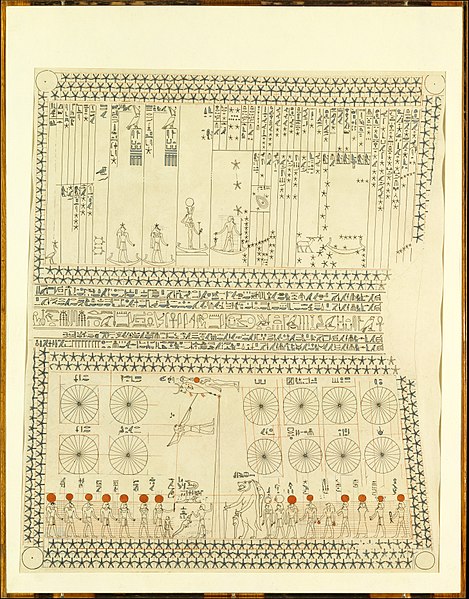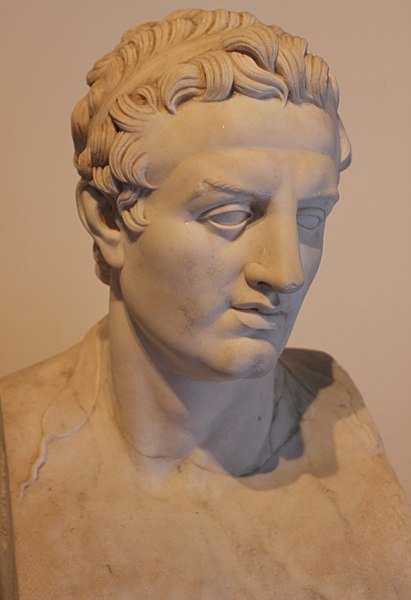The ancient Egyptian calendar – a civil calendar – was a solar calendar with a 365-day year. The year consisted of three seasons of 120 days each, plus an intercalary month of five epagomenal days treated as outside of the year proper. Each season was divided into four months of 30 days. These twelve months were initially numbered within each season but came to also be known by the names of their principal festivals. Each month was divided into three 10-day periods known as decans or decades. It has been suggested that during the Nineteenth Dynasty and the Twentieth Dynasty the last two days of each decan were usually treated as a kind of weekend for the royal craftsmen, with royal artisans free from work.
A section of the hieroglyphic calendar at the Kom Ombo Temple, displaying the transition from Month XII to Month I without mention of the five epagomenal days.
Astronomical ceiling from the Tomb of Senenmut (XVIII Dynasty, c. 1479–1458 BC), discovered in Thebes, Upper Egypt; facsimile preserved in the Metropolitan Museum of Art.
The sky goddess Nut and human figures representing stars and constellations from the star chart in the tomb of Ramses VI.
The Nile flood at Cairo c. 1830.
Ptolemy III Euergetes was the third pharaoh of the Ptolemaic dynasty in Egypt from 246 to 222 BC. The Ptolemaic Kingdom reached the height of its military and economic power during his kingship, as initiated by his father Ptolemy II Philadelphus.
Ptolemy III Euergetes
Berenice II, the wife and half-cousin of Ptolemy III
Seleucus II
A statue that may represent Ptolemy III in Pharaonic guise








